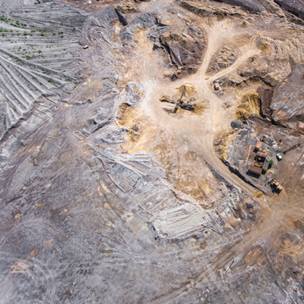Rising political tensions highlight the need for secure mineral supplies. Thankfully, numerous academia and industry led initiatives are underway.
Whitchurch, A., Diversifying supply.
Geoscientist 28 (10), 5, 2018
https://doi.org/10.1144/geosci2018-019; Download the pdf here

In mid-September, the US-China trade conflict intensified when the Trump administration slapped new tariffs on $200 billion worth of Chinese imports. In a turnaround from earlier reports, rare earth elements (REE) were spared. The omission highlights China’s monopoly on the rare earth market. The US, like Europe, relies heavily on China for their supply of REE, which are used in smart phones, laptops, electric vehicles and wind turbines, as well as in military defence technologies.
It is essential to diversify REE supply. Interestingly, a rich source of REE may exist in a common waste product—coal ash. By burning coal for electricity, the US alone produces tens of millions of tonnes of coal ash annually. Much goes to landfill or is stored in open containment ponds, yet this waste product can contain REE with concentrations 100 times higher than found naturally. Attempts to extract the REE have so far proved too costly, but new research (Das et al., Journal of Cleaner Production 189, 539-551, 2018) reports on a method to extract REE profitably, using supercritical carbon dioxide and a chemical, tributylphosphate, that forces the REE to clump together. Tributylphosphate is incredibly expensive, but if the coal ash contains high concentrations of REE, and particularly scandium, the most expensive REE, the process could be economically viable—and could provide an additional income stream for the waning coal industry.

The prospect of repurposing old waste to extract scandium is touched on in a feature by Pete Siegfried and colleagues on page 10 of this issue. In reviewing the various sources of this important element, they note that scandium concentrates in red muds—the waste products of aluminium processing. Like coal ash, tens of millions of tonnes of red waste are produced annually. Major European initiatives, such as SCALE and the Red Mud Project, are underway to research REE and particularly scandium recovery from red muds. There is scope to diversify REE supply and contribute to the circular economy in the process.
In addition to REE, construction minerals are vital for an improved standard of living. Geopolitics shouldn’t be a major issue UK: our diverse geology provides a ready, indigenous supply of construction minerals. But, as argued by Nigel Jackson on page 16, Government ignorance may compromise supply because they fail to link the delivery of housing and infrastructure that underpins economic growth to the need for secure mineral supply. To combat this, the industry has launched the UK Minerals Strategy, which aims to galvanise action and ensure supply of over 5 billion tonnes of minerals and mineral products for the next 25 years.
Experts from academia and industry are on the case, but secure mineral supplies should not be taken for granted.
AMY WHITCHURCH, EDITOR
[email protected]
Further reading:
Image credits: DapurMelodi (top) & Mariusz Prusaczyk (bottom), both from Pexels.com